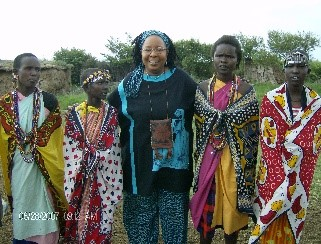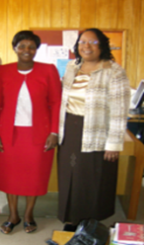My Sankofa Experiences
This is part one of a three-part blog that relates to the importance of culture.
We need to “Sankofa”!…go forward but go back.
Sankofa (pronounced SAHN-koh-fah) is a word in the Twi language of Ghana meaning “to retrieve” (literally “go back and get”; san – to return; ko – to go; fa – to fetch, to seek and take) and also refers to the Bono Adinkra symbol represented either with a stylized heart shape or by a bird with its head turned backward while its feet face forward carrying a precious egg in its mouth.
For many African Americans, the word “Sankofa” represents the importance of moving forward, but also finding more about one’s past to gain an understanding of who one is, and how the past can offer guidance for the future. “Sankofa” is a time to pause, reflect on the past, and, look to the future relating to one’s identity, culture, and personhood.
As long as I could remember, I was introduced to the accomplishments of my African American roots through my father, and my experiences during the Black Power Movement in the 1960s and 1970s. I always, however, felt I needed to know even more about my people and myself. I desired to reflect back on those experiences. It was important to me to gain more knowledge of the Black experience and even its painful and troubled past. As I began to seek information on this subject, opportunities began to emerge. I had several Sankofa experiences, looking back, reflecting, and moving forward.
My first Sankofa experience was a desire to visit Africa and understand where my existence began. In 2007 I was able to visit Kenya in East Africa. This trip was twofold. First, I met with the director of the statewide ministry of education (see photo, left) and trained early childhood teachers on educational approaches with their students. Secondly, I learned about myself and gained some insight into my features, possibly being traced to a particular part of this continent. As I traveled throughout, Kenyans would speak Swahili, their native language, assuming I was native to this country. I was told often that my facial features could provide information that connected me to Kenya and they could tell I was from there. I would often look in a mirror scanning my face for some evidence of their statement. I could not understand what they saw. It was baffling but they saw something significant. It was not until 2019 I decided to take the Ancestry.com test that indeed confirmed a certain percentage of my DNA showed Kenyan roots!
Throughout my several trips to Kenya, I visited the Masai tribe from Masa Mari on the Serengeti in the Eastern part of Kenya. I was accepted and welcomed, similar to that of a long-lost relative. As I visited towns and cities in this country, I began to look at the people and saw resemblances of some of my relatives in the United States. Also, places and things seemed very familiar, though, it was the first time I’d been there. The familiarity was uncanny. I was becoming more comfortable with myself. My Sankofa experience began with going back to where it all started for me. I visited Kenya several times after my initial visit and learned more about myself but, desired to learn even more.


Next month I will share the next part of my journey!
the author meeting with the Masai women of Kenya
~Rochelle Pleasant M.A.E.D.
Rochelle Pleasant is an early childhood educator. She has been a teacher, mentor, and coach, and has provided training to many early childhood educators nationally and in the Republic of Azerbaijan, and Kenya, West Africa. She has offered a variety of workshops, particularly, focusing on culture and diversity, with a previous role that helped to create a diversity task force team with a former organization.

